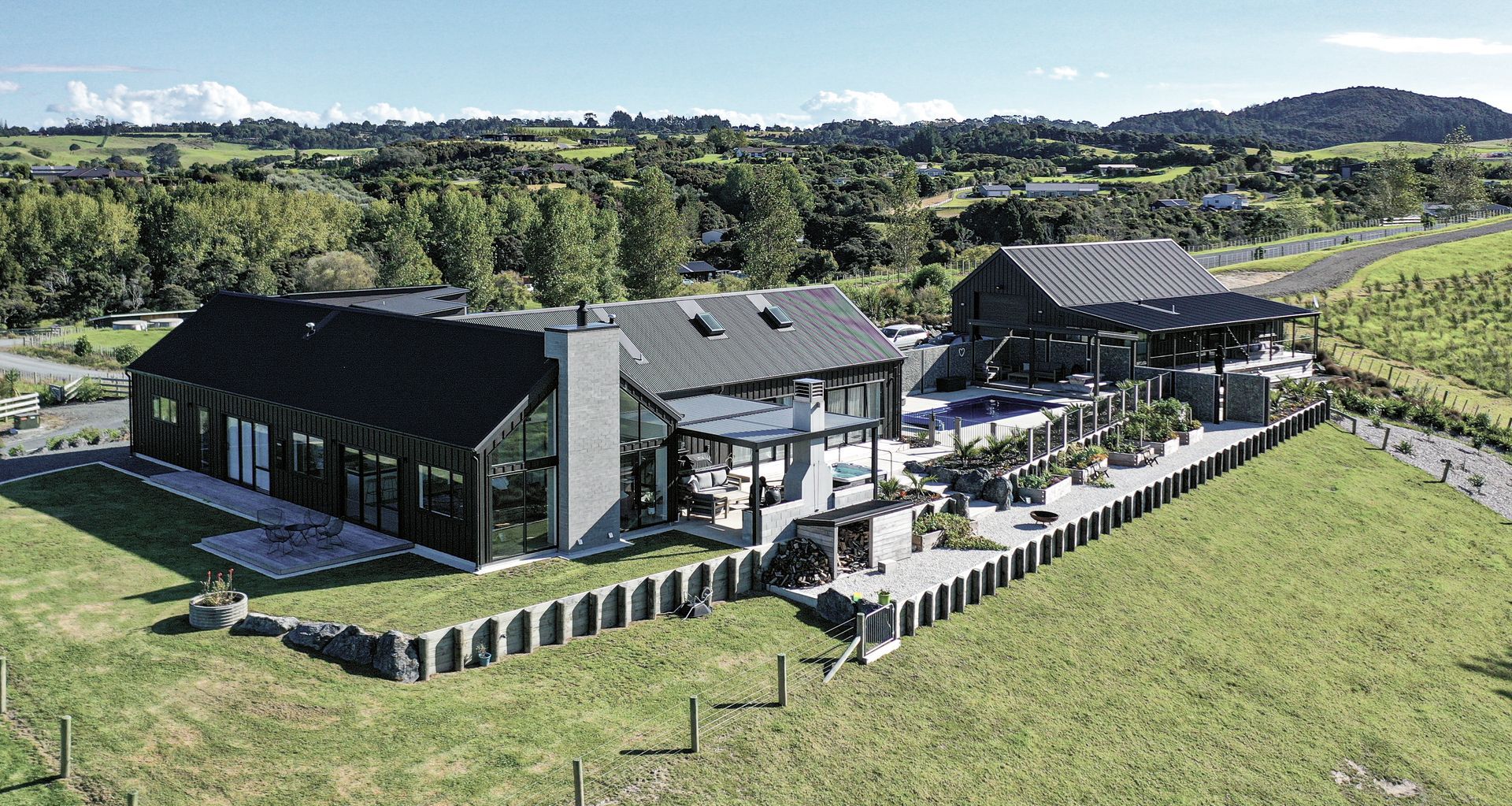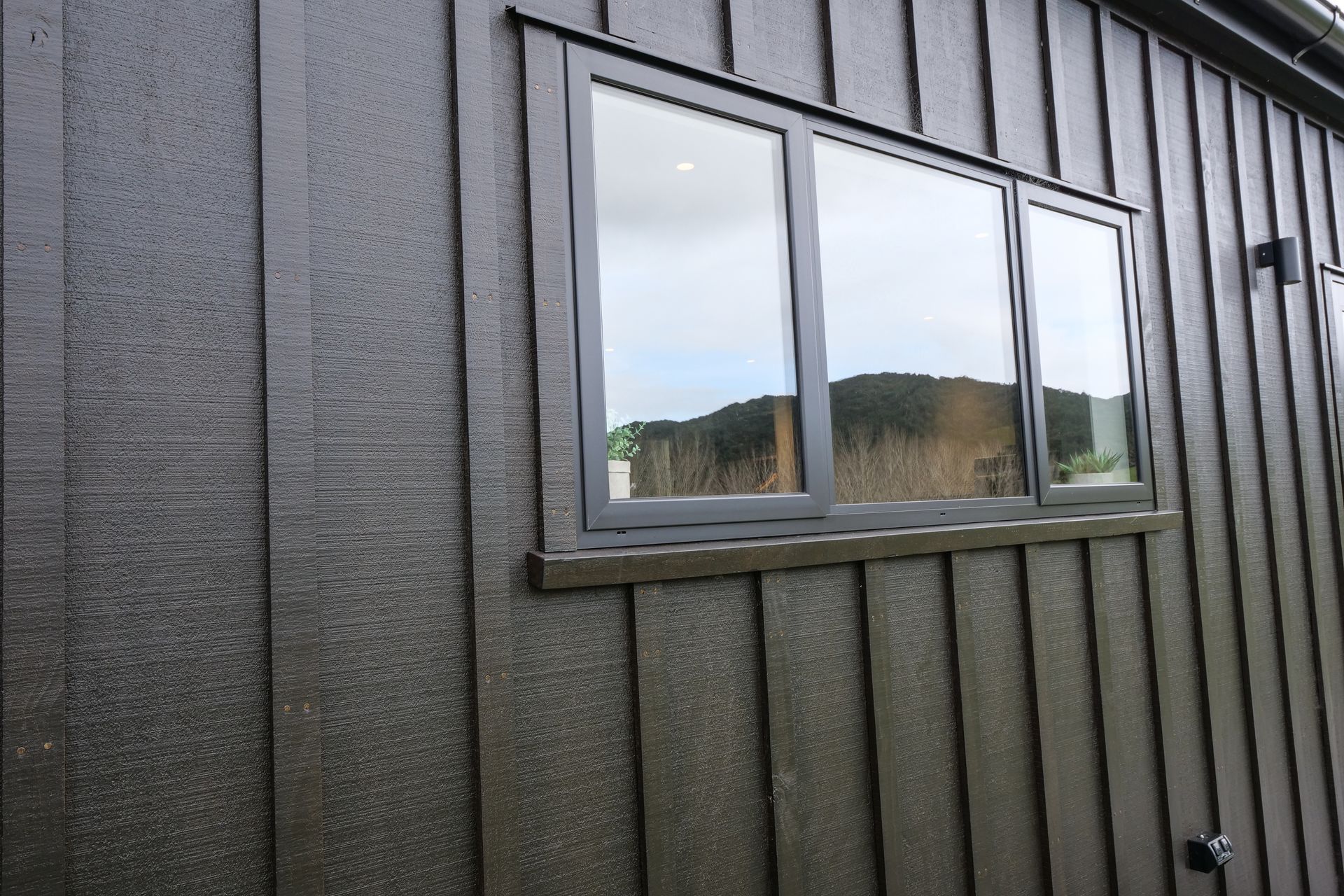How to make plywood cladding even more adaptable

Plywood cladding is one of the most enduring forms of cladding in the construction industry in Aotearoa. Robust and superbly weathertight, it’s often available in a variety of timber species and in a range of sheet thicknesses and sizes.
Its versatility is also well-known: exterior plywood sheet faces can be either plain or bandsawn, leaving tangential ridges and hollows, and shallow decorative grooves can be incorporated to suit established aesthetics.
Triclad, one of New Zealand’s premier manufacturers of plywood exterior cladding products, is particularly well-versed in the ins and outs of bandsawn plywood, owing to its dedicated board and batten cladding system: the Enduroclad range.

For plywood, bigger is better
Paul McInally, a part owner and director of Triclad, says in addition to all the standard benefits of bandsawn plywood cladding, including weather grooved battens, the Enduroclad has another trick up its sleeve.
“The thing that makes this system stand out is its ability to stretch to the size requirements of many modern houses being specified today,” says Paul. “It can be stretched all the way up to 7.2 metres.”
Paul says there is a very specific manufacturing technique used by the team at the Hamilton factory that enables Triclad to achieve this.
“Beginning with a 2.4m sheet, we use a tongue and groove to join each together to create longer lengths – eliminating the need for a horizontal Z flashing on walls above 2.4m in height,” says Paul. “Each sheet mimics the other through the bandsaw effect. The joint is still visible to some degree – we can’t make it totally invisible – but when it's painted, it blends in with the rest of the bandsaw.”
The fact that the plywood can be stretched so long means installation can be simplified, too: for boards beyond a height of 2.7 meters, there is no need to install Z flashings.
This ease of installation and adaptability to height requirements makes the Enduroclad system especially ideal for larger homes, townhouses and showhomes across the country – where aesthetics are often a primary consideration. The lack of horizontal Z flashings in the Enduroclad system gives it an edge in this regard, Paul says.
“It means you don’t have this horrible piece of metal going right around the circumference of your house,” he says. “The look and feel of that plus the larger sheets really makes a difference.”

Customisable and locally-sourced
Additionally, Triclad’s plywood is all manufactured from radiata pine sourced from across the country, predominantly the South Island as these are slower growing trees due to colder climate conditions.
“We get all of our radiata pine only from local sustainable FSC sources,” says Paul. “We try not to use anything from overseas – the only thing we import for our manufacturing is glue.”
The entire Enduroclad range features square edged sizes at 1198mm wide to ensure a centre stud pattern with expansion gaps, and is bandsawn on the face - which highlights the grain of the wood especially when painted. The battens all come with capillary grooves (weather grooves) on the back and are bandsawn on the face and sides to blend in with the rest of the system.
Customers can request lengths to their own specifications, however there are specific widths and thicknesses offered. These are 2440mm, 2745mm, 3000mm, 3300mm, 3600mm, 3900mm, 4200mm, 4500mm, 4800mm, 5100mm, 5400mm, 5700mm, and 6000mm.
Paul says this wide range of size options and ability to customise is a significant factor contributing to the range’s popularity – and he hopes the success of the range so far will lead to even greater versatility.
Learn more about Triclad and its Enduroclad Board and Batten Cladding System.

